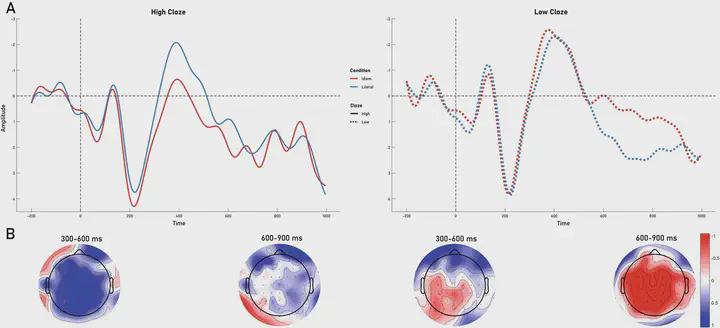
Abstract
This chapter reviews the electrophysiological research on four most commonly used figurative language types: metaphor, idioms, irony, and jokes. For metaphor, we focused on two issues: the incremental comprehension of metaphors and the role of metaphor in embodied cognition. In terms of comprehension, advances have been made regarding how meanings are selected, mapped, and suppressed when concepts collide. In terms of embodiment, current debates center on the involvement of sensory-motor systems through metaphors in abstract concepts. For idioms, we reviewed literature investigating how factors, such as the predictability or decomposability of an idiom, influence the degree to which the idiom is processed holistically or compositionally. Current view posits that idioms may be processed in both ways. For irony, we summarized research with regard to differences between spoken and written irony, as well as more recent efforts to investigate written irony in the context of computer-mediated communication. While many factors affect earlier stages of processing, irony has a robust neural correlate in the later stage. For verbal jokes, we reviewed stage-wise models, as well as joke types and individual differences. Stage-wise models explain how and when the incongruity in jokes is detected and resolved by readers to obtain a mirth experience, and how such process is modulated by different joke types, such as phonological jokes (puns) and semantic (mental) jokes. In terms of individual differences, joke processing is highly dependent on socio-pragmatic abilities and personality traits. We concluded this chapter with a summary of the commonalities and differences across these types of figurative language, their electrophysiological correlates, and future directions.